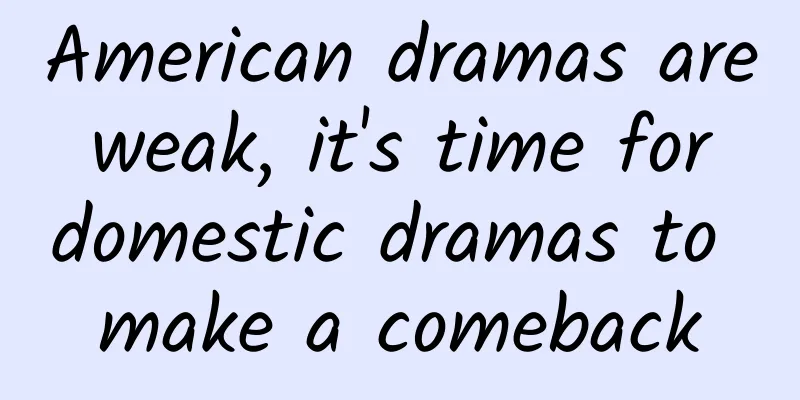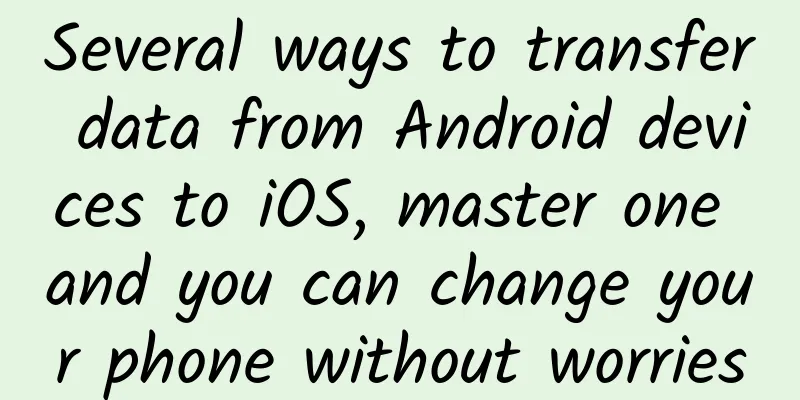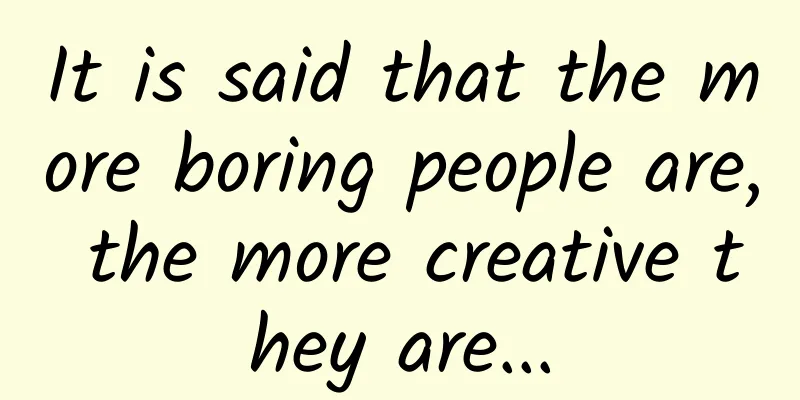Who did Apple kill this time?

|
This article is authorized to be published by Hangtong News (WeChat ID: lifeissohappy | WeChat search: Hangtong News | Weibo: @Hangtong News). Please do not reprint or quote without permission. Shuhang was sent from Beijing on June 4th Every time Apple upgrades iOS/macOS, one or two, or even more third-party developers are directly "shot". Which third-party developer did Apple "kill" at WWDC 2019? Compared with the past, this time Apple's attack is more extensive. It not only directly hits the famous work of a former Apple engineer, Duet Display, but may also affect the sales of third-party digital drawing tablets such as Wacom that are paired with Mac computers. Even though their main features were "stolen" by Apple overnight, some well-known iOS / macOS auxiliary tool developers did not overreact. They still tried their best to sum up their superiority compared with the system's native functions, wiped their tears, and moved on. Go your own way and leave no way for othersHistorically, when iOS is compared to Android or Windows, there are always many inconveniences that drive users crazy. Since the early days of "jailbreaking", some developers have used their own hands to create plug-ins to bring some long-awaited features to iOS, or simply create some new ways of interaction. However, Apple sometimes uses system updates to incorporate the functions of some third-party software, making these software - some of which are paid software and are also the software authors' means of livelihood - useless. For example, in the early days of jailbreaking, the most commonly used feature was to imitate the global drop-down notification bar of Android phones. Apple introduced the notification center in iOS 5 in 2011, making it unnecessary to install a notification bar for jailbreaking. Another important use of jailbreaking is to install iFile [1], a file manager similar to Windows or Android, which changes iOS to use applications as the unit, does not display the real file system, and cannot perform basic operations such as cutting, copying, and pasting files. Apple introduced the "Files" app in iOS 11, and made important updates to the Files app in iOS 13 released at WWDC, allowing it to directly read the contents of USB flash drives. Although it is still far from a real file system, Apple is undoubtedly gradually simulating people's operating habits in files while taking security into consideration. Another popular use of jailbreaking among Chinese users is to block harassing calls. The "Call Blocking and Identification" system feature introduced in iOS 10 in 2016 allows third-party developers such as 360, Chubo, and Tencent to combine their own harassing call databases with iOS system-level blocking. [2] After jailbreaking disappeared, such functions that originally required "magic modification" of the system had to obey the capabilities allocated by the system to third-party applications and could not go beyond the red line. Despite this, there are still various applications that can "dance with shackles" and introduce some system-level functional adjustments. The "Night Shift" feature added to iOS in 2016 and macOS in 2017 completely overlaps with the function of F.lux, a dedicated tool that automatically adjusts the color temperature of the display to protect the eyes [3]. The product has been updated normally for many years since 2009 and has gained fans around the world. At that time, F.lux was just preparing to develop an iOS version, and it had to be jailbroken before it could be used. Apple's own "Night Shift" change also caused the iOS version of F.lux to remain at 0.9986, because there was no need to develop a formal version. Later, Windows 10 also added a "Night Light" function that adjusts to yellow light according to time periods, making F.lux irreplaceable only on the Linux platform. The Mac file manager Finder has been lacking multiple tabs for years (in fact, Windows also lacks this feature). A small tool called TotalFinder can bring a tab style similar to that of Google Chrome to the Finder window. [4] However, Apple introduced the official Finder multi-tab feature in OS X 10.9 Mavericks, which brought incompatibility issues to TotalFinder. Former Apple Engineer VS AppleLate at night on June 3, Apple held WWDC 2019 and announced separate iPad OS, new iOS, and macOS. When the Sidecar feature was announced, the editor of TechCrunch[5] and many others immediately thought of the same poor product: Duet Display. The author of Duet Display, Rahul Dewan, is a former Apple engineer. He was one of the first developers to enter the field of using iPad as a secondary display for Mac. The professional skills he honed at Apple made Duet Display the first to realize the mirroring or extension of Mac screen via wired or wireless means, while simulating mouse clicks with finger touches.
Astropad later added support for using the iPad as the primary screen of a Mac rather than a secondary screen, allowing you to use the iPad with a Mac Mini.[6] The hardware product Luna Display allows the computer to recognize the iPad as a physical display instead of using simulated mirroring technology to avoid delays. Several products are competing with each other, and their functions are constantly upgraded. In December 2018, Duet Display announced that it would use the hardware acceleration function of Mac[7] and claimed that it would connect faster than Luna Display. Moreover, it was a pure software method and the cost was only 1/10 of the purchase of Luna Display hardware. Before WWDC, some media had exposed rumors that Apple would officially support iPad as an auxiliary display; as the Sidecar function of macOS 10.15 Catalina turned from rumor into reality, the last ray of hope left for manufacturers such as Duet, Luna, and Astropad was also shattered. Digital tablets become the "fish in the pond" that is affectedThe combination of iPad Pro and Apple Pencil can be said to be perfect - if you are strictly limited to the iOS application ecosystem. Before the Pencil came out, I had bought a third-party iOS stylus, which was launched by FiftyThree, the developer of the famous drawing app Paper. It was also called Pencil. When the Apple Pencil was first released, I tried it out, and the result was not surprising: “53 may be the biggest loser.” [8] "If you ignore the price, you can say that the Apple Pencil and the Surface Pro Pen are tied for first place, far surpassing the 53 Pencil's experience... I think the Apple Pencil is a pencil, while the Surface Pro Pen is more like a gel pen or fountain pen, and the 53 Pencil is like a marker or a brush dipped in ink." Although the pairing method of the first-generation Apple Pencil when plugged into the iPad charging port is extremely funny, this still cannot stop the Apple Pencil from becoming the industry-recognized best-performing stylus product on the iPad, and the 53 Pencil has become another victim of "official forcing fans to death" as mentioned above. With Apple Pencil, you can draw wonderful works on the built-in memo of iOS, as well as third-party note-taking software such as GoodNotes and OneNote. The software will help you dynamically adjust some possible flaws when moving the pen, so that the effect of writing on the screen is even better than writing with real paper and pen.
(Photo source: Air China) However, the applications on iPad are "reproductively isolated" from those on Mac, and drawing vector images relies heavily on Mac applications such as Adobe Illustrator and CorelDRAW, so the advantages of Apple Pencil cannot be directly transplanted to them. Until today, if you wanted to trace the background directly on your computer desktop instead of starting from a blank piece of paper, third-party graphics tablet manufacturers like Wacom were still the only option. Sidecar is not only an official alternative to Duet Display and other tools, but also the only one of its kind that officially supports precise positioning of the Apple Pencil. This means that this pen, which is fully capable of competing with high-end pens such as Wacom, can now achieve a similar effect as Wacom. The high price of a digital tablet is unimaginable for ordinary people who are not in the drawing industry. Now, for the same or even less money, you can buy a tablet and pen with similar accuracy, and this tablet can also be used as an iPad (it is actually an iPad). Isn't the difference obvious? Is there an end to Apple's "borrowing" of third-party ideas?Apple has long defined the iPad Pro as a productivity tool, and a productivity tool that is truly suitable for most people must have a mouse and keyboard, must support multiple windows and parallel multitasking, must have a highly open file system, and so on. In other words, the definition of "productivity tool" in people's minds has long been deeply constrained by the mindset of PC and Mac. Forcing people to switch to iPad and reshape the production process with new methods such as touch requires tedious training and is not necessary. This has deeply restricted the evolution of iPad towards the "productivity" direction that Apple expects. Many people have called for iPads to use macOS directly, or for MacBooks to support screen touch - Windows 10 has already proved the feasibility of this approach through two-in-one tablets such as Surface. However, in many ways, Apple does not want to give in. On the one hand, the biggest competitive advantage of Apple devices and services now lies in ecology, security and privacy. For traditional "productivity" devices, users have too much operating authority over the machines, and many "productivity" are achieved through indirect cracking of permissions, such as modifying hosts, running command line programs such as python in the terminal, and calling up developer tools with F12 in the browser. If the macOS architecture is completely transferred, it will pose a threat to the security technology, operating habits and established App Store ecology that the iPad product line has accumulated so far. On the other hand, this is also a matter of "face". Apple publicly ridiculed Microsoft at WWDC 2006 for its flagship new system Windows Vista, which borrowed a lot of Mac OS X cumulative update features, such as Spotlight, Safari RSS reader, independent mail and calendar applications, etc. [9] And if the touch "dimensional wall" between macOS and iOS is really broken, this ultimate "tribute" to Windows 10 and Surface will far exceed what Apple condemned at the time. Therefore, using Sidecar to project the Mac screen to the iPad is already the limit of Apple's concession to the definition of "productivity". At present, there are still some iOS and macOS gadgets, which are essentially some functions that are only available on Mac or PC in iOS, or some cross-platform applications have to develop a separate iOS version. However, Apple is not willing to completely connect the application systems of iOS and macOS for the time being, leaving a breathing space for the remaining such tools. This may also be the end of Apple's "killing" of third-party applications. What should I do if Apple “borrows” my ideas?For the pioneers such as F.lux, TotalFinder, Duel Display, etc., after they finished watching WWDC like everyone else, the question they immediately faced was: What should I do in the future? The answers they gave were: expand their functions beyond their main functions; further refine differentiated user experience; and leverage cross-platform advantages to build a moat that synchronizes across operating systems and multiple terminals. TotalFinder was previously known for Finder Multi-Tags. After the official introduction of this feature, it needs to think of other ways to retain paying users and attract new users. For example, it can add colored labels to files and folders as a whole, which are more eye-catching than the small dots that come with the system; it can display the folder of a certain tab at the top, always in the front; it can open two symmetrical folders side by side in one window, making it convenient to drag files between folders, and so on. Apple's official snatching of business did not dampen TotalFinder's fighting spirit. It became more and more courageous and made full use of Finder, which also attracted some loyal users who had the energy and interest to tinker with and optimize the system to continue to follow it. After Sidecar was announced, Luna Display, which also makes iPad secondary screen displays, released a feature comparison table[10], advising paying users: “We are not prepared for everyone. But if you are a professional, we will meet your needs.” The comparison points out that compared with Apple Sidecar, Luna Display's unique advantages include: it is naturally compatible with all Mac applications, rather than just a few products such as Adobe; it is compatible with Mac Mini; because it is a hardware signal amplifier, it can be connected at a distance of 10 meters; it can correct colors; and it can get priority technical support. It is still questionable whether these listed benefits are enough to make people pay for a feature that Apple officially provides for free, but seeing the "desire to survive" overflowing from the screen is still worthy of people's appreciation. More products have chosen a path that Apple is least likely to "copy": extending their services to Android and Windows. Apple once considered extending its services to Windows. iTunes, Safari and iCloud control panel all have Windows versions. However, in recent years, these Windows versions have stopped technical support. In addition to Apple Music launching an Android client and Apple TV extending to some third-party manufacturers' TVs, Apple's overall strategy is to shrink the ecosystem to its own devices and systems, making its own services a privilege for Apple users. For some "Apple fans", Apple's ecosystem construction is successful. They choose Apple products from mobile phones, tablets, computers to watches, and can get the best experience. But compared with all digital device users, they are only a minority. Such a strategy also allows some products that exist in the form of online services, rather than just selling a copy of the software, to extend their tentacles to platforms such as Windows and Android, and serve users who purchase multiple devices from different manufacturers at the same time. Although each operating system manufacturer has its own cloud storage solutions such as iCloud, Google Drive and OneDrive, this does not prevent Dropbox from achieving rapid development. Although the functions of third-party password management tools such as LastPass and 1Password have been replaced after the "Keychain" upgrade of iOS 12, they are still the only choice if you want to share password vaults between Windows computers and iPhones, or between Macs and Android phones. Presumably, in the future, products like Duet Display will be able to gain a glimmer of hope after Apple “borrows” from them by developing similar capabilities such as allowing the iPad to serve as a secondary screen for a Windows 10 computer. |
<<: iOS developers file class action lawsuit against Apple, alleging it violates competition law
>>: How will Apple support the future of its five major OS?
Recommend
If you go to bed at one or two in the morning every day, how long will it take for you to die suddenly? I don’t dare to hold on after reading this…
Expert of this article: Zhao Wei, MD, associate c...
Breathing stopped 263 times in one night. Why is snoring so harmful?
"I heard you snoring last night. You slept s...
New methods of selling products through live streaming in 2020, strategies for selling products through short videos!
In 2019, "Li Jiaqi" and "Viya&quo...
How can a newbie learn how to operate Douyin? Douyin operation strategy for beginners
The popularity of TikTok is self-evident. With th...
How to advertise on Amazon? Amazon advertising tips!
In 2018, the Google and Facebook advertising duop...
Qingyun's "Live Streaming and E-commerce Tutorial" teaches you how to build a high-conversion live streaming scene at the lowest cost
Qingyun live e-commerce tutorial, teach you to bu...
Advertising landing page production process
One of the things that netizens hate most when su...
One picture to understand | Are left-handed people more likely to become artists?
Produced by: Page Expression x Dongdong Miao...
Hot search! Is canceling your phone number equivalent to betraying yourself? The truth is...
A few days ago, the topic "Canceling your mo...
Four marketing steps that must be initiated before the APP is launched
Nowadays, making an APP is a very simple thing, b...
Counterpoint: Global sales of pure electric passenger vehicles increased by 29% year-on-year in Q3 2023
In the pure electric vehicle market, Tesla is the...
How can you fight cockroaches in Guangdong?
How can you fight cockroaches in Guangdong? As we...
You must know the rules of Tencent social advertising!
Tencent social advertising has become one of the ...









